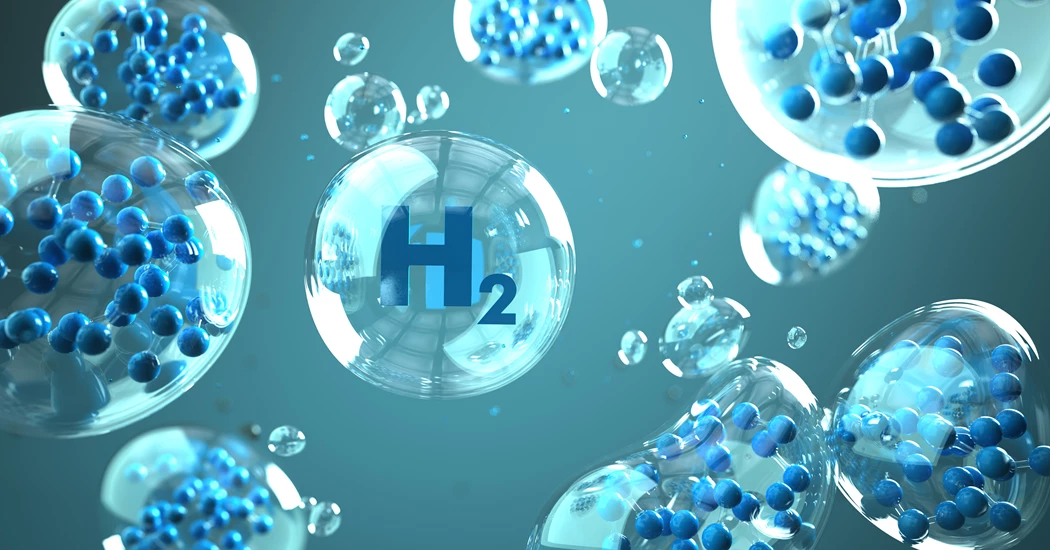Can hydrogen help save us? Maybe. But only if we get it right
The energy world is at a crossroads.
The fossil fuels that have driven the last 150 years of economic growth have contributed to destabilising levels of global warming, threatening the lives and livelihoods of people worldwide. We cannot achieve the goals of the Paris Agreement pursuing a business-as-usual approach to fossil fuels, a centerpiece of December’s UN Climate Talks in Dubai.
At Environmental Defense Fund (EDF), we believe electrification with extensive use of renewable energy is critical to decarbonisation. In most cases, and in most places, it will be the fastest and most cost-effective path to decarbonise the economy.
But in some situations, green electrons alone will not be able to do the job, at least for now. Alongside electrons, we may also need low- and zero-carbon molecules to create the clean fuels needed for global shipping, aviation and industrial sectors like steel and cement.
That’s why I was in Abu Dhabi for ADIPEC’s Hydrogen Strategic Conference. Hydrogen holds tremendous promise. It can provide the basic building block for many clean fuels and feedstocks that companies are trying to develop to reduce dependence on fossil fuels. So, a lot rests on getting hydrogen right.
Not a plug and play solution
Hydrogen is not the simple, plug-and-play solution many believe. And that has important implications from both a commercial and regulatory standpoint.
We should start by understanding that hydrogen poses a climate risk of its own – a risk developers, investors and regulators need to address. Although not a greenhouse gas itself, hydrogen triggers powerful warming effects as it reacts in the atmosphere, increasing concentrations of other greenhouse gases. The latest research indicates that pound for pound, hydrogen has 37x the warming power of carbon dioxide in the first 20 years after it’s released.
Hydrogen is the world’s smallest molecule, making it especially prone to leaks. Half a million hydrogen atoms can sit side by side in the width of a human hair. Currently, instruments that measure hydrogen emissions are only effective at detecting concentrations high enough to cause an explosion. Critical knowledge but not sufficient to determine how much hydrogen is being lost from hydrogen value chains.
New sensors are being developed that can detect much lower concentrations important to the climate. EDF recently announced successful field tests of a hydrogen monitor designed by Aerodyne Research that can accurately measure even small emissions of hydrogen. We are now partnering with companies operating hydrogen facilities to collect data on emissions rates for existing infrastructure.
We will learn a lot more as we collect data. But until then, we should be very cautious. Right now, nobody knows how much hydrogen is likely to leak from hydrogen value chains. It is likely that the rates are at least as high as they are for methane. And that would be like throwing gas on a fire.
Sourcing hydrogen
Next is sourcing. Virtually all hydrogen produced today comes from the very fossil fuels it is supposed to replace, with the greenhouse emissions released straight into the atmosphere. Many believe we can simply capture the carbon dioxide released when making hydrogen from natural gas and stash it underground. But that’s neither easy nor cheap; let alone the community impacts of pollution.
Nor is industry yet effectively managing methane leaks from the natural gas supply chain that dramatically undermine the case for so-called blue hydrogen, even if the carbon dioxide is sequestered. We do the climate no favour by hand-waving in the face of these challenges.
Others are looking to “green” hydrogen, extracted from water using renewably generated electricity. But that process is expensive too, and despite continued growth in wind and solar, demand for renewable electricity still far exceeds supply. For uses like heating and cooking or powering cars and trucks, we’d get far greater climate benefit at much less cost to consumers using that green electricity directly.
Producers have spent over a decade grappling with methane emissions that were once ignored and are still a long way from solving the problem. It’s a lesson the industry should heed now. We do not have the time or money to waste on false prospects or wishful thinking. We must get hydrogen right.
Energy Connects includes information by a variety of sources, such as contributing experts, external journalists and comments from attendees of our events, which may contain personal opinion of others. All opinions expressed are solely the views of the author(s) and do not necessarily reflect the opinions of Energy Connects, dmg events, its parent company DMGT or any affiliates of the same.






